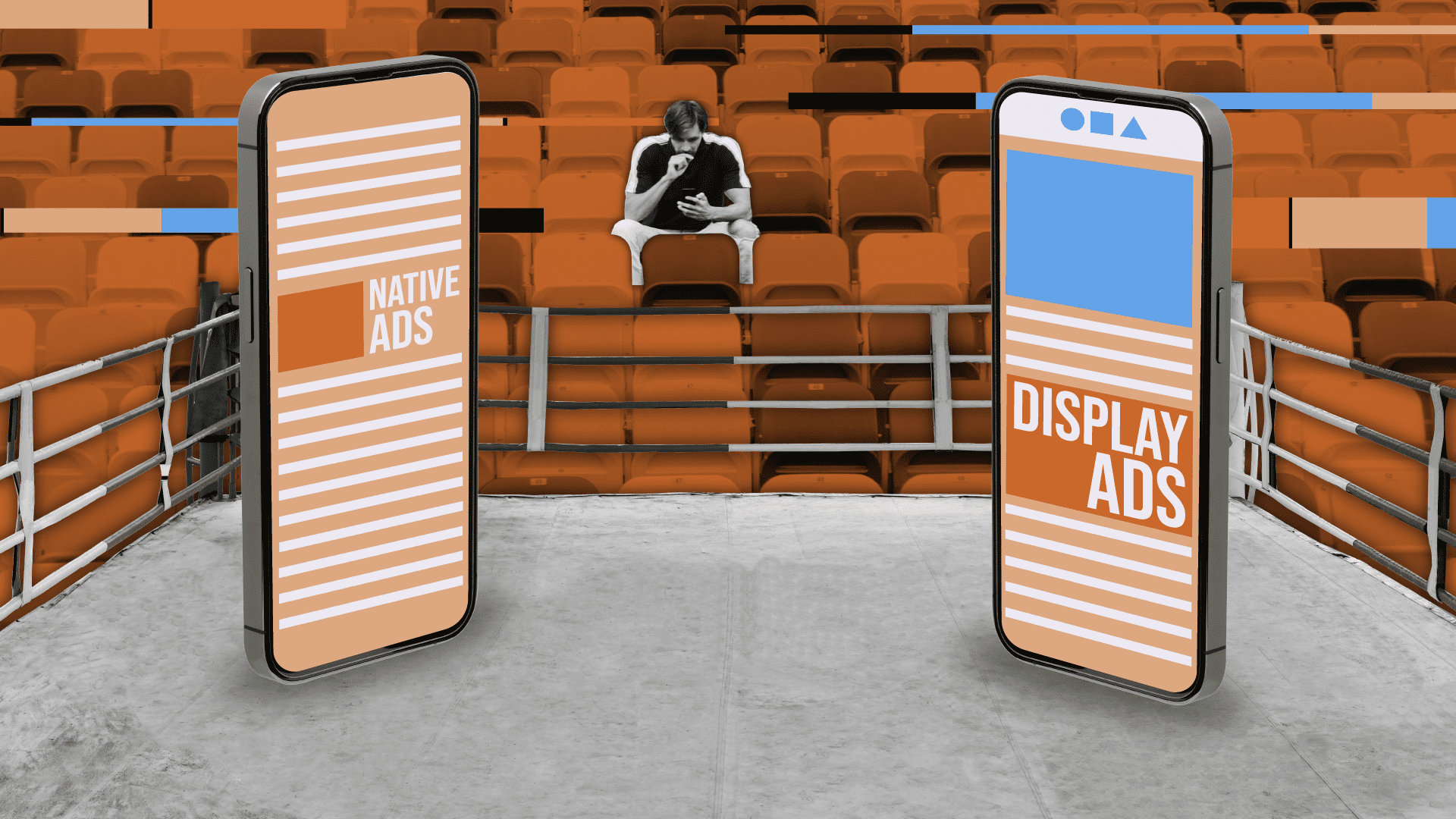Native Ads vs Display Ads: Which is More Effective (2023)
Find out the differences between native and display ads to help you decide which is more effective. Get all the latest trends and insights here.


When it comes to native ads vs display ads, how do you decide which approach will generate more results (and revenue) for your campaign?
In this post, we’ll explore the pros and cons of both types of ads and provide our top tips on how to pick the right one for your campaign. Here’s what you need to know to spend your marketing budget wisely.
What is native advertising?
Native ads are “native” to the platform or website they appear on. In other words, native advertising is non-intrusive and looks and feels like it belongs. It blends in with its surroundings, as opposed to standing out like a sore thumb (a la an advertisement).
For example, native ads could take the form of sponsored posts from a brand in your newsfeed, promoted tweets in your Twitter timeline, or even sponsored content in your Instagram feed. Essentially, native ads feel like part of the content instead of an ad.
Let’s say you’re scrolling through your Facebook newsfeed and come across a post that reads: “This new mascara is a game-changer! Find out why I love it so much.”
That post is an example of a native advertisement—a sponsored post from the brand that appears to be part of your newsfeed, even though it was created by the brand in question rather than another user.. As long as the creative is top-notch, you may not even think twice before clicking.
What are display ads?
Display ads, on the other hand, are more traditional digital advertising formats that appear in various sizes and shapes across different platforms. These ads typically feature a catchy headline, a bright image, and a solid call to action (CTA).
Unlike native ads, display ads don’t blend in with the content of the website or platform they appear on. Instead, they stand out from the rest of the content and catch people’s attention quickly.
As a result, display ads are a terrific choice if you want to drive traffic to your website or prompt people to take a quick action (like signing up for an email list).
What’s the difference between native ads vs display ads?
The main difference between native ads and display ads is that native ads blend in with the content of the platform or website they appear on, while display ads stand out.
Native ads are usually more subtle and focus on providing helpful information to readers to pique their interest. In contrast, display ads are typically used to drive people to a specific page or prompt them to take action.
Other key differences:
- Native ads are viewed up to 52% more times than display ads.
- Native ads are 18% more effective when influencing purchase intent than banner ads.
- Native ads have a higher click-through rate than display ads.
- Display ads can increase brand awareness by up to 80%.
- 27% of consumers search for brands after encountering a display ad.
Examples of native ads vs display ads
- Native Ads: A sponsored post in a newsfeed, promoted tweets in your Twitter timeline, a PPC ad, or content recommendations.
- Display Ads: A banner ad, a pop-up ad, or responsive display ads.
Pros and cons of native ads
Native Ads Pros:
- They blend in with the content and don’t feel like an ad.
- They can be more effective at driving user engagement and conversion.
- They are less intrusive than display ads.
- Native ad campaigns generate more traffic.
Native Ads Cons:
- They can be more expensive than display ads.
Pros and cons of display ads
Display Ads Pros:
- They are more eye-catching than native ads.
- They can be cost-effective.
- They’re easy to create and run.
Display Ads Cons:
- They can be intrusive and annoying.
- They have lower visibility than native ads
- Their click-through rate is lower
- They can be less effective at driving user engagement and conversion.
Why are native ads controversial?
Native ads can be tricky business—they’re designed to look like natural content, leaving consumers perplexed and potentially deceived. With their seamless integration into everyday media consumption experiences, you may find yourself asking, ‘is this just an article, or is it actually trying to sell me something?’
To keep it ethical, most native ads do users the favor of identifying themselves as such. Be on the lookout for logos or lines that say something along the lines of “sponsored by” to spot a native ad in the wild.
Native ads or display ads: which is better?
Ultimately, the choice between native ads and display ads depends on your objectives. Native ads are better for building brand awareness, generating share-worthy content, and boosting user engagement, while display ads are more effective at driving traffic to a specific page or website.
Here are some questions to help you determine which is best for you:
- Are you trying to build brand awareness or generate conversions?
- How much are you willing to spend on advertising?
- What type of content does your target audience respond better to: native ads or display ads?
Knowing your goals and understanding the differences between native and display ads will help you decide which is best for your business.
How can marketers keep track of which campaigns and channels perform best?
Attribution modeling is the process of analyzing and evaluating the performance of different channels so marketers can identify which campaigns and media drive the most conversions. This data can then be used to optimize campaigns, measure ROI, and allocate budget more efficiently.
You can learn more about how attribution modeling can help you make better decisions regarding campaigns here.
Ready to make the most of your ad spend?
Hey can help with that—from creative to analytics, we’ve got you covered. So whether you’re looking for native ads or display ads, we can help you maximize your ROI and reach your advertising goals.
Still feeling unsure? Don’t worry, we’re here to help you decide. With our expertise and experience, we can provide tailored advice on which type of ad is best for your business.


Comments are closed.